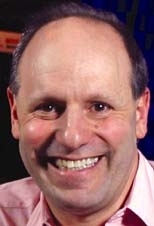According to Ted Selker, an MIT voting technology expert reviewing the 2004 elections, the state of voting systems, procedures and technology in America has improved since the 2000 election, when 4 to 6 million votes were lost due to problems in registration, vote-counting or ballot design.
In 2004, complaints dropped dramatically and some states, such as Nevada and Georgia, made historic progress in reducing lost votes. But systemic changes and technological innovations are both necessary to protect the vigor and resilience of the democratic process, Selker said.
Selker, an associate professor at the MIT Media Lab, is co-director of the Caltech-MIT Voting Technology Project (VTP), launched in 2000. The team's 2001 report, "Voting: What Is, What Could Be," set in motion a nationwide review of voting procedures as well as research on individual state systems. Selker and the Caltech-MIT team have worked since then to observe voting and voting equipment throughout the country, analyze data concerning voting technology performance and research and demonstrate improvements in technology.
Selker's travels in November 2004 showed that there continue to be numerous problems in polling places and with sloppy polling place practices. Also, Americans vote in conditions of varying security and accessibility. Despite legal mandates, making voting truly accessible and equitable remains a goal, he said.
"Reno, Nevada, has the cushiest voting places--schools and libraries and churches mostly and community centers--and they were spacious, well lit and without curbs or access barriers. Like many places we saw, Beverly Hills residents faced several obstacles: they voted in a garage that is hard to get to, on a hill with a steep driveway that's difficult to negotiate. In Chicago, the variation is dramatic. It goes from an Italian restaurant that is closed down for the purpose of voting, to a homeless shelter that smells of urine, to a firehouse," Selker said.
Right in Boston, he found voters in Mattapan struggling to fill out ballots in the dim light. "I've got pictures of lamps hanging over people voting because even though the lights on the ceiling were on, people had literally been complaining they could not see their ballots," Selker said.
In addition, Selker and the Caltech-MIT team described Americans' use of widely differing voting methods.
"There's levers in New York; there's punch cards in Ohio; there is Inka vote in Los Angeles. (It's a punch card where you use ink instead of punching a hole.) Internet voting was used in the 2000 primaries in Phoenix, Ariz., and it was used in Michigan's 2004 primary elections," Selker said. He predicted that Internet voting would eventually replace other methods and noted the Voting Technology Project had already developed "two or three different approaches for eliminating or reducing coercion in Internet voting."
While Selker did not expect online voting to be established by 2008, he emphasized it was the future of voting generally. He also noted that the Caltech-MIT team is focusing more on technology for innovation in voting than it did four years ago in anticipation of streamlining and securing US votes and vote-counting. More than half of the VTP's funding is going towards technology development, he said.
"We have serious new technology for secure transfer of ballots, for voting systems that cannot be hacked and that know when they're being hacked. We have serious technology for improving ballots, for improving disabled people's voting capability. And, we've also built software to automatically test voting technology," Selker said.
For Selker, technological changes and innovations must coordinate with political changes to make every vote count. Changes he thinks would be effective include getting rid of registration as it is now practiced, rethinking exit polls and forbidding predictions of election results before votes are tabulated, Selker said.
The Journal of Voting Technology
In true MIT manner, the interdisciplinary VTP has created a whole new field for study and research--the field of voting technology. Selker's hope is both to work directly on engineering technological solutions applicable to voting problems and to establish an online Journal of Voting Technology. This would provide a forum for publishing and for peer review of research in the new field, he said.
Asked what the contents of the Journal's first issue might be, Selker responded with characteristic enthusiasm.
"We would do something about polling place operations and voter training. We'd do something about the verification and auditing of technology and we would do something about the exit polls in this last election," he said.






